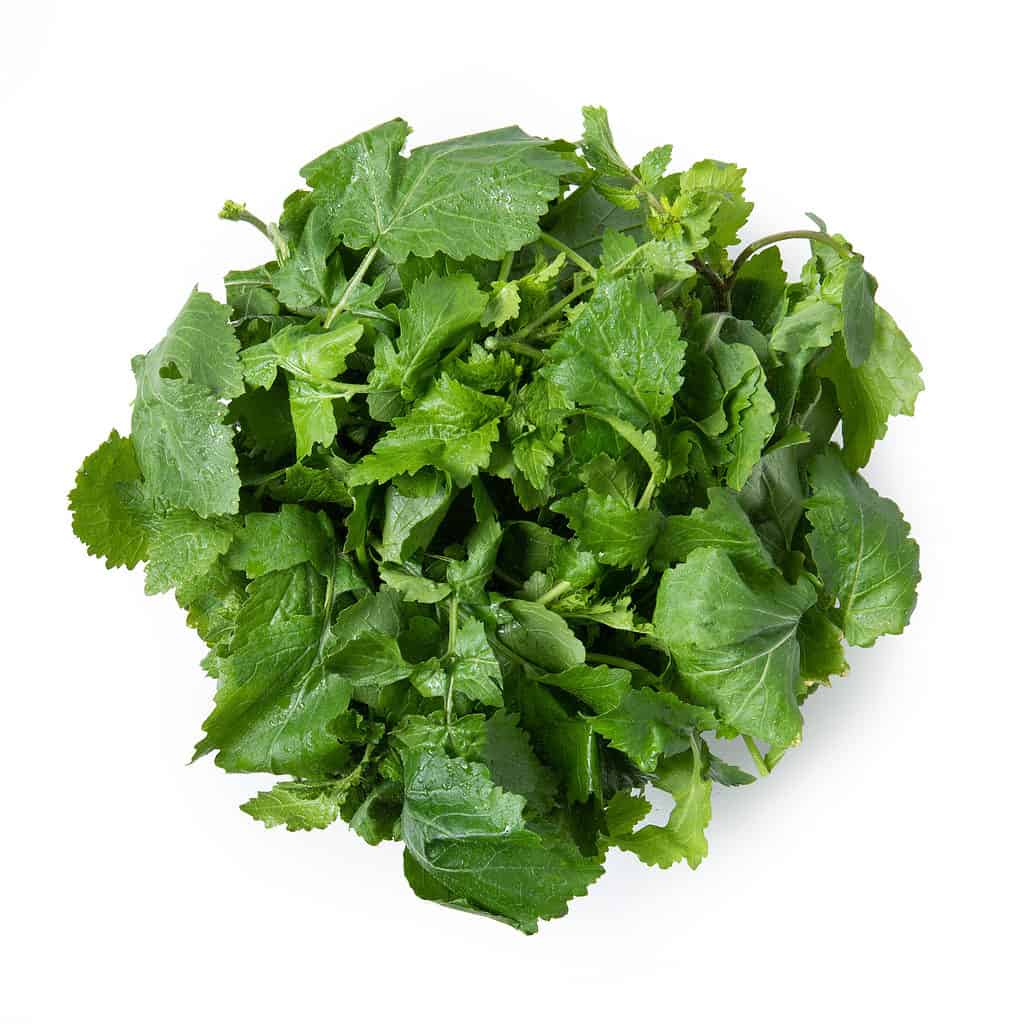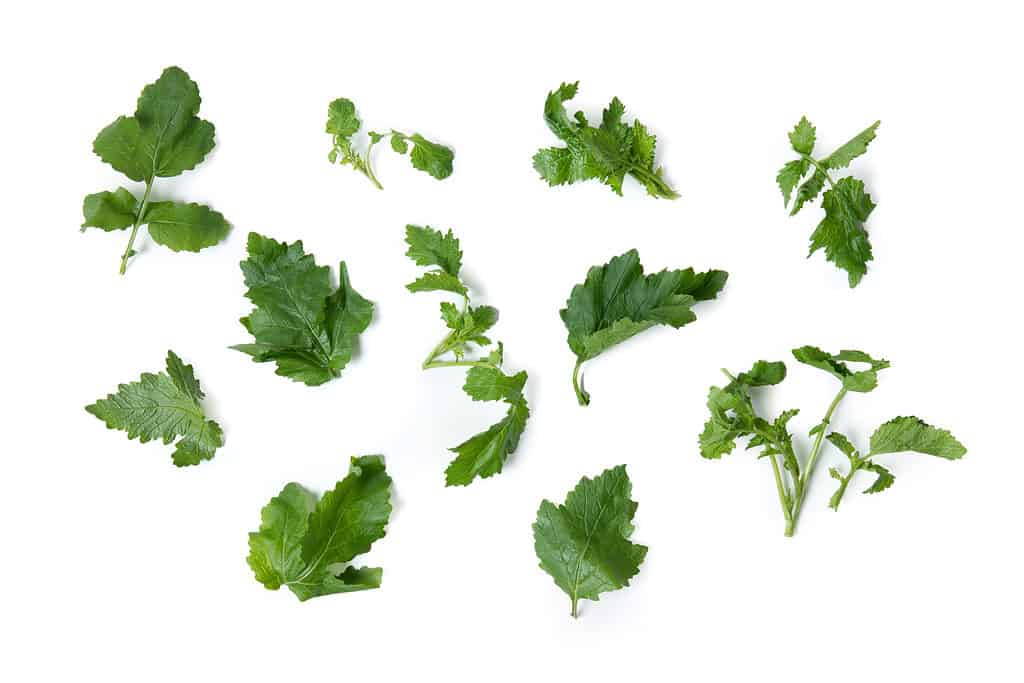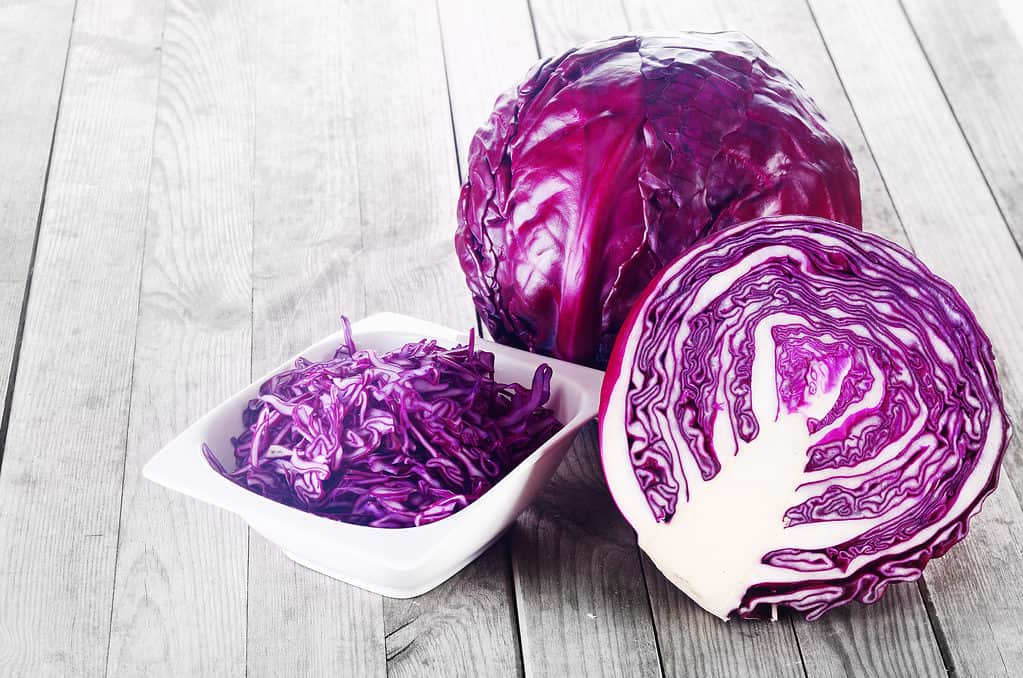Vegetables like cabbage are well-known for their high nutritional content. If you are trying to eat healthier, adding cabbage to your meals is a great way to start. Eating cabbage regularly can boost your brain function, fight radiation, and reduce the chances of getting heart disease and cancer. If you plan to grow cabbages in your backyard, you must watch for chipmunks, rabbits, and deer. They might give you a lot of trouble, especially during harvest time. Cabbage is not only good for humans. Our pets love them too! Yes, dogs can eat cabbage too!
Cabbages can be eaten raw or cooked. You can choose one of several types of cabbages to add to your food! This article discusses some key facts and details that you should know about purple and Mediterranean cabbage, including their appearance, taste, and culinary value.
Comparing Purple Cabbage vs. Mediterranean Cabbage

Vegetables like cabbage are well-known for their high nutritional content.
©AN NGUYEN/Shutterstock.com
| Key Differences | Purple Cabbage | Mediterranean Cabbage |
|---|---|---|
| Classification | Kingdom: Plantae Clade: Tracheophytes Clade: Angiosperms Clade: Eudicots Clade: Rosids Order: Brassicales Family: Brassicaceae Genus: Brassica Species: Brassica oleracea Variety and Form: Brassica oleracea var. capitata f. rubra | Kingdom: Plantae Clade: Tracheophytes Clade: Angiosperms Clade: Eudicots Clade: Rosids Order: Brassicales Family: Brassicaceae Genus: Brassica Species: Brassica fruticulosa |
| Characteristics | Round, purplish red vegetable made up of compact leaves | Round vegetable with green leaves attached to a long stem |
| Culinary Value | – Peppery and floral taste that gets sweeter when roasted or sauteed; – Eaten raw, sauteed, stir-fried, roasted, pickled, and more. Needs to be cooked carefully, as the red color in the leaves can bleed into other foods or water | – Tastes and smells like broccoli – fresh and slightly bitter; – Eaten raw or blanched, and can also be sauteed, roasted, or stir-fried |
| Nutrition Information | More nutritionally dense compared to Mediterranean cabbage, given its distinct color; full of antioxidants, Vitamin C, and potassium | Exceptionally healthy because it’s low in calories, fat, and cholesterol |
The Key Differences Between Purple Cabbage vs. Mediterranean Cabbage
Purple and Mediterranean cabbage have one obvious difference: their color. Aside from their clear distinction, have you ever wondered what distinguishes them? And what about red cabbage? Is it any different than purple cabbage? Here are the key differences that can help you tell them apart.
Purple Cabbage vs. Mediterranean Cabbage: Classification

Mediterranean cabbage is a separate species called
Brassica fruticulosa, and is also called twiggy turnip.
©Italian Food Production/Shutterstock.com
The word “cabbage” is derived from an Old French word, caboche, meaning head. Purple and Mediterranean cabbages are different cabbage types that belong to the Brassica genus in the mustard/crucifer (Brassicaceae) family. Purple cabbage is a Brassica oleracea cultivar scientifically called Brassica oleracea var. capitata f. rubra.
On the other hand, Mediterranean cabbage is a separate species called Brassica fruticulosa. Mediterranean cabbage is also called twiggy turnip, and you will soon find out why.
Purple Cabbage vs. Mediterranean Cabbage: Characteristics

Mediterranean cabbage flavors are closely related to broccoli.
©Italian Food Production/Shutterstock.com
Purple and Mediterranean cabbages produce a cluster of flowers with light or pale yellow petals, but purple cabbage has slightly bigger petals.
Purple cabbage produces fruits about 3 to 4.7 inches (8 to 12 cm) long. Mediterranean cabbage produces fruits about 0.8 inches (2 cm) long or more.
Purple and Mediterranean cabbages are round plants characterized by large leaves integrated into a head. The head where the leaves are attached is small, oval-shaped, and firm. The leaves are smooth and slightly wrinkled, but their colors vary. Purple cabbage has red to gray-violet leaves, while Mediterranean cabbage has green leaves.
According to studies, the color of the purple cabbage is attributed to either a change or a deletion of a gene that restrains anthocyanins. Anthocyanin is a type of water-soluble pigment that produces a red, purple, blue, or black color. Because of the absence of this gene, purple cabbages have more anthocyanins, resulting in their reddish-purple color.
Purple Cabbage vs. Mediterranean Cabbage: Culinary Value

Purple cabbage tastes floral and peppery and gets sweeter when sautéed or roasted.
©stockcreations/Shutterstock.com
Purple cabbage and Mediterranean cabbage are vegetables with great culinary value. Their vibrant colors are a great addition to salads and can be appetizing to the eyes. However, their tastes are slightly different.
Purple cabbage tastes floral and peppery and gets sweeter when sautéed or roasted. On the other hand, Mediterranean cabbage flavors are closely related to broccoli. They can be eaten raw or blanched and added to salads with mustard, red bell peppers, carrots, and radish.
When eating raw cabbage, you must remove the outer and tougher leaves while slicing the inner leaves for better culinary experiences.
Purple Cabbage vs. Mediterranean Cabbage: Nutrition Information
Studies show that red or purple cabbage has more anthocyanins than other green variations of cabbage. Anthocyanin is an essential ingredient in the food industry and can be found in health-improving supplements.
Because of this, red cabbage is more nutritious than Mediterranean cabbage. In fact, it is one of the most nutritious types of cabbage. Purple cabbage is high in vitamin C and antioxidants that help boost our immune system and improve eyesight, teeth, and bone health. It also has flavonoids that fight cancer.
Some Incredible Cabbage Facts
- One of Russia’s national dishes is Shchi, a traditional soup made of cabbage.
- Cabbage has over 400 varieties, including red cabbage, green cabbage, savoy cabbage, Mediterranean cabbage, and Napa cabbage.
- Cabbage is low in calories, fat, and cholesterol.
- In Hebrew, the word “rosh kruv” directly translates to “cabbage head,” which means stupid or dummy.
- Purple cabbage is one of the most nutritious varieties of cabbage. It contains vitamins A, B, C, K, manganese, and potassium.
- Meggett, South Carolina, was once considered the “Cabbage Capital of the World.”
- Studies show that cabbages contain an active compound called glucosinolates which causes their slightly bitter taste.
- According to the Guinness world records, the heaviest cabbage in the world weighed 138.25 lb (62.71 kg). It was presented on 31 August 2012 at the Alaska State Fair by Scott A. Robb.
UP NEXT
- Cabbage vs Lettuce: 5 Key Differences
- 19 Vegetables to Plant in September
- Napa Cabbage vs Green Cabbage: What’s the Difference?
The photo featured at the top of this post is ©
Sources
- BioMed Central Ltd, Available here: https://doi.org/10.1186/s12870-018-1290-9
- National Science Foundation, Available here: https://swbiodiversity.org/seinet/taxa/index.php?tid=75033&taxauthid=1&clid=0
- ScienceDirect, Available here: https://www.sciencedirect.com/topics/agricultural-and-biological-sciences/cabbage
Thank you for reading! Have some feedback for us? Contact the AZ Animals editorial team.






